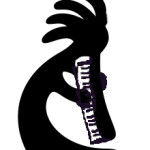A MIDI Melodica
Tagged: MIDI
- This topic has 13 replies, 1 voice, and was last updated 3 years, 11 months ago by
Antonio Freixas.
-
AuthorPosts
-
March 31, 2020 at 10:11 pm #11237
Antonio Freixas
ParticipantHi,
I think most people here are probably happy playing their existing melodicas, but occasionally someone (like me) will start lusting for a MIDI melodica. I decided to investigate any existing commercial or DIY solutions. At this point, I think I’ve found most, if not all references to MIDI melodicas on the web—articles, videos, and instructables.
The idea may not occur often, but it does occur repeatedly. Silly me, I decided to see if I could actually assemble a MIDI melodica using existing parts. After some months, I’ve learned enough to want to share my thoughts with anyone else who might be silly enough to go down the same rabbit hole. The result is a long document that serves more as a cautionary tale than anything else.
I don’t expect most people in this group to actually read the document. But some of you are inveterate tinkerers and might be interested. Also, by placing it on this forum, the few people who might, years from now, start to go down the same path may find my document through a web search and be able to benefit from my experience.
Of course, I always welcome constructive comments and suggestions.
Here’s a link to the document (which is a PDF):
https://drive.google.com/file/d/1Bhh9Vy9LgiplDIFRBlZDf42uThHY9m7H/view?usp=sharing
April 2, 2020 at 2:30 am #11241 KevinParticipant
KevinParticipantThanks for posting this Antonio. It’s very thorough and thought out. I’ve had a TEC controller and Korg Microkey for some time.
Your discussion of the pressure gradient were interesting. I could never find the right setting that felt as natural as playing the melodica. I haven’t fooled with it in a long time.
I was mostly interested in playing synth sounds and found it a little more effective to use the breath control to open and close the filter instead of the volume.I’m curious if you had looked into the EWI wind controllers and similar from Yamaha and now I think Roland?
I was curious if I could use breath on one of those but still control the notes from a traditional keyboard?April 2, 2020 at 3:28 am #11242Antonio Freixas
ParticipantStrangely enough, I can actually answer your question since I’ve owned a Yamaha WX11 wind controller for some time.
Yes, you can use breath from one and notes from the other, but it is horribly clumsy.
The WX11 emulates (roughly) the fingering of a saxophone/clarinet/recorder. What this means is that, if you blow into the instrument, it always plays a note, just like a real instrument. In other words, even without any keys pressed, you get a note. So to get the breath control data from the WX11 but not the notes, I sent it to a track on my DAW, REAPER, where I used a MIDI effect to discard the notes.
What happens next depends on the MIDI instrument being used. The particular sound library I first used didn’t support breath control, so I also mapped breath control to volume. Then I had the keyboard send on Channel 2 to a separate track where another filter changed the note velocity to the maximum, 127 and the channel to 1.
Both tracks were then merged into a third track that contained the sound library. Rather involved, no? But it worked.
The final volume of any note was breath control * velocity / 127 and since velocity was always 127, the breath control value completely controlled the volume. If I didn’t change the velocity of the keyboard notes to 127, then the volume of any note is wildly unpredictable.
Then I bought some Audio Modeling instruments. They use velocity for attack and they support breath control is supported, so I still had the WX11 on channel 1 and they keyboard on channel 2, but I only needed to do the note suppression of notes from the WX11 before merging.
I had to hold the WX11 with one hand while playing the keyboard with the other. It’s a pain. The only reason I even did this was to get a sense of how well a breath controller would work with the Audio Modeling instruments before committing to buying the TEC BC 2.
In any case, as you can see, it can be done, but the solution depends on the MIDI instrument you use and the tools you have to work with. You cannot just use a MIDI merge solution–that won’t work.
April 4, 2020 at 3:16 pm #11244 Jerry BallardParticipant
Jerry BallardParticipantI’m sure you inow about the TEControl breath/bite/tilt controller, but just in case, here’s the link
As soon as I’m confident I wont need every penny for canned goods and toilet paper, I’m having my button vibrandoneon midi-fied with a Totter system and this breath controller (in addition to the Totter breath/bellows mechanism.
Theyve confirmed that they can supply it to me without the headset so I can attach it directly to the vibrandoneon’s ‘S’ pipe.April 4, 2020 at 11:03 pm #11247Antonio Freixas
ParticipantHi, Jerry,
I guess people don’t really want to actually read my document. I admit that it’s long and getting longer. I own the TEC BC 2 and I review it’s faults extensively in my document. You might want to take a look.
In addition, I’ve created a video to illustrate the noise problem. I posted a link to the video in the Facebook group, but I can add it here as well. If you manage to connect the TEC BC 2 to the ‘S’ pipe (how?), you might be able to put some distance between you and the exhaust noise. In the video you provided, I suspect that when they guy is playing he switches to a MIDI recording to eliminate any ambient sounds (including the exhaust sound). I’m my video, I eliminate all MIDI sounds, so the noise from the breath controller is completely exposed.
I’m not a fan of the tilt/node mechanism. It’s fine for studio work, but everyone I see using it looks a bit spastic. I really think this breath controller is mainly designed for studio work. Good luck with it—it might work in your environment.
April 4, 2020 at 11:41 pm #11248 Jerry BallardParticipant
Jerry BallardParticipantWell to be fair, you do preface your article with a caveat that its super geeky. ?
Ill look at it now. Thanks!
The TecControl seems amazing, but even though I’m pretty savvy, I cant get my head around how I hook a Usb midi xpression controller into the stream of a midi’d vibrandoneon.
Even if I just eant to use the 2 as input to, say, GarageBand on an ipad, i have no idea how one accomplishes that hookup.
You have any idea?April 4, 2020 at 11:45 pm #11249 Jerry BallardParticipant
Jerry BallardParticipantMy intent would be to bypass the Totter/windpipe and simply be using the pipe as the holder for the tecontrol.
Adding to the blasphemy is the fact that I may actially take the reed blocks out of the vibrandoneon to make it a pure midi controller. Lighter and not just have midi layering over reeds.April 5, 2020 at 12:11 am #11250Antonio Freixas
ParticipantSure, I know how to do some of the hookup (no knowledge of GarageBand or iPads, sorry).
I know what the TEC BC 2 is sending. What exactly will the midified vibrandoneon send? Does it have velocity sensing on the notes?
I’m going to guess that there will be no velocity sensing. Since MIDI requires that notes have both pitch and velocity information, I’ll guess that the controller will send a fixed velocity.
GarageBand looks like it supports MIDI instruments as plug-ins. It doesn’t matter how it does it, what matters is whether the instrument supports breath control. If the instrument supports breath control, then route both controllers to the instrument. On my DAW, I would just set up a track so that it inputs from all MIDI controllers. The two controllers will need to send on the same channel (usually 1).
If the instrument doesn’t support breath control, then it probably supports volume. This is not the same thing at all, but for some simple MIDI instruments, it doesn’t matter as they are not very sophisticated. You have to somehow map CC 2 (breath control) to CC 7 (volume). This is a GarageBand thing, and I’m sure a web search will tell you how.
Usually breath control values change the timbre of the sound; soft notes don’t sound the same as loud notes. Volume control doesn’t–it’s just volume. You get one timbre; it’s quiet or loud, but it’s the same sound. It’s OK if you’re not really trying to emulate a real instrument.
If you simply mount the TEC BC 2 on the pipe, that’s fine. You’re going to have the exhaust sound right next to your ear, though. Your mileage might vary, but I’ve found it very obnoxious. It’s OK on quiet passages, but not loud ones.
April 5, 2020 at 3:12 pm #11252 Jerry BallardParticipant
Jerry BallardParticipantThanks for this info Antonio! Its so hard to get this info.
I was completely unaware of the amount of noise made by the Tecontrol mouthpiece.
When I said ‘GarageBand’ I guess was more referring to ‘ipad apps in general’.
The Totter interface uses optical switches on each key (simple on/off) and adapts the bellows air pressure sensor as volume control from the wind pupe.
My primary use case will be:
Vibrandoneon->midi interface (eg iRig Pro Duo)->iPad->sound generator (eg SampleTank).
With live performance as the main use.The main thing I like about the Tec BC is the bite control which lets me add pitch bend or growl.
But for the life of me I cant figure out how tge usb connection for the Tec gets connected into this setup.
Im thinking that initially, I’ll just use the straight Totter system and have volume control only.Thanks!
April 5, 2020 at 3:19 pm #11253 Jerry BallardParticipant
Jerry BallardParticipantIm thinking that initially, I’ll just use the straight Totter system and have volume control only. Another option is to use a foot pedal for expression input. Thats easy with a hardware sound module, but again, I’m not clear on how one uses an expression continuous controller into an ipad since no midi interface ive ever seen has such an input.
April 5, 2020 at 7:48 pm #11254Antonio Freixas
ParticipantSorry, it’s hard to help when I’m unfamiliar with so many parts of the system. If the vibrandoneon has a bellow, what is the pipe used for?
In any case, if you use a MIDI instrument that supports breath control, you can just plug all MIDI instruments in to your ipad, assuming that the ipad accepts USB MIDI devices (and I would guess it does). If you have only one MIDI port, you use a MIDI hub. That’s it.
Usually, everything transmits on Channel 1. You don’t have velocity sensing so I assume the notes come in with a fixed velocity. So just plug in a USB breath controller or a USB expression pedal and you’re done. You might be assuming that it’s harder than it is.
The MIDI instrument needs to support breath control or expression pedal. You would need to check the docs on the instrument you plan to use. If it doesn’t, pick something that does or look up “how to map MIDI controllers on an ipad” to find out what’s possible. As I said, almost everything supports volume (CC 7), so you can always try mapping to that.
To make MIDI work, you need the controllers but you also need hardware/software that makes a sound. There isn’t a universal answer for how to make something work; you have to choose all your components. This is true whether you use one controller or more than one. What kind of sound do you want? If you view an Audio Modeling demo and think “That’s what I want!” then your controller is not going to be a good match. If you use Joe’s Discount MIDI, then your controller is fine, but you might need some CC mapping capability.
April 7, 2020 at 3:01 am #11255 Melodica-MeParticipant
Melodica-MeParticipantAntonio,Jerry, I used this method a long time ago to connect my Ipad to the Akai MPK Mini controller.
Hope this helps
Melodica-MeMay 6, 2020 at 3:45 am #11267 Henry LowengardParticipant
Henry LowengardParticipantThe world is kind of on pause right now, but there’s a kickstarter that succeeded is for the re.corder, a recorder that is also a MIDI Controller Over Bluetooth LE, and I suspect it can pick up breath control. That’s the main thing for simulated melodicas, you’ll want a speedy breath control to merge with whatever note events you can put out on some other device.
Here’s an Arduino hackable one: https://hackaday.io/project/161678-usb-midi-breath-controller.You’d probably want to add a MIDI IN to help it merge into the system, and make it something you plug right into the cable between a controller and a synth module.
May 11, 2020 at 12:47 am #11268Antonio Freixas
ParticipantHi, Henry,
I don’t know if you had a chance to read my article, but let me say that just getting a breath controller is easy–creating a useful MIDI melodica from it is trickier.
The Arduino hackable has a design problem: no exhaust port. Without one, you won’t be able to do vibrato. However, that’s an easy fix.
I have a lot of the Audio Modeling instruments. Just hooking up a breath controller (and my model is professional) and a keyboard still leaves tons of problems. You will never get the full expressivity of these VST instruments without some additional controllers.
Again, I cover all this in my document. If you have any interest in a MIDI melodica, you should really consider reading it.
-
AuthorPosts
- You must be logged in to reply to this topic.
